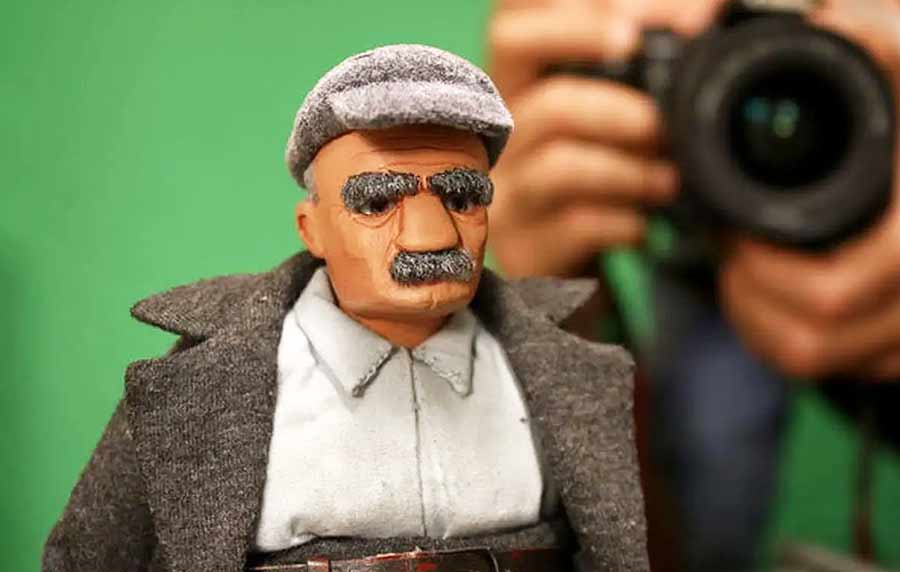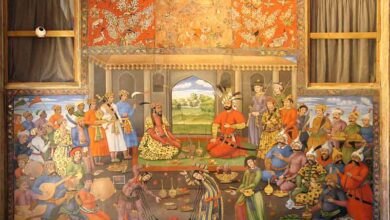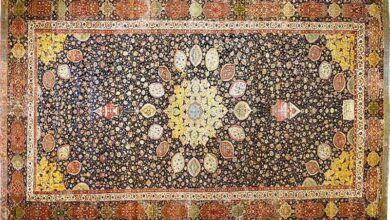Graphics In News

Human life is meaningful based on connections with the world around him and his fellow man, and language is the first means of human communication that conveys human feelings, emotions, and needs in the form of conventional words.
But just knowing the language or the ability to speak is not enough to connect people; It is also necessary to have hearing and knowing common words. The eye and the eye also have the most effective role in learning the language of art because it provides the opportunity to experience directly and without the mediation of reality and surrounding objects in the most neutral way. Therefore, we trust our eyes more than other organs and our sensory organs to understand reality.
Obviously, shrinking the world within the pupil of the eye is the beginning of change in all elements of human life, such as seeing, hearing, and believing the truth. It is with this in mind that experts recommend that the main lines of education be reviewed. Creating close relationships between currents that have hitherto been separate is an issue that has gone far beyond the boundaries of art, has been opportunistic and hypothetical. In other words, on the one hand, it depicts the real world in the form of virtual symbols in front of the viewers, and on the other hand, the accumulation of information and visual data confuses the audience in understanding the truth. That is why line, surface, color, material, space, place and time must create an interconnected set of interconnected events to clearly reflect the events of human society. So you should not think only of the results. Rather, it paved the way for the emergence of a perspective that encompasses a wider range of activities through more precise interrelationships between the sensory and visual fields.
Visual Art relying on artistic tools, it records forms of shared understanding in the mind and beliefs of the audience. That is, by combining point, line, surface, color, space, place, and so on. In aggravating or undermining the truth; It regulates the confused thoughts of human beings.
Recognize TV graphics
In the visual arts, graphics refer to those works of art that have in themselves the ability to reproduce. Therefore, any work of art that is in the form of visual communication, has a message or not, because it is intended for use on television, the intention of reproduction is hidden in it.
But just as there is a variety of topics, trends, and definitions in the field of graphics, television graphics also have their own characteristics, and will be more specific when the title of news graphics is added to it. In this type of graphics, due to special sensitivities and applications, the work is much more delicate and sensitive than television graphics in its general form.
The discussion of television graphics and here news graphics can be divided into two separate branches.
1- Technical issues
Before the use of computers at all levels, especially graphics, all graphic productions for television were made in the traditional way, that is, using common tools and materials in the production of graphic works. At that time, the graphic effect was not limited in size and it was only necessary to present the produced effect with a ratio of 4.3 in order to fully use the graphic design. Due to the possibility of shooting graphic works (one is a studio camera and the other is an LD system), the timeline was limited by the size of the work that required the use of an LD system. In this system, the maximum effect size should not exceed one 4.3 screen. In this way, the prepared effect was placed on a table on which the camera lens, or LD, was focused vertically, which offered special features to users with zoom and zoom back capabilities. And this system was often used in live broadcasts, if there was no size limit, larger dimensions were used, dimensions close to 70 × 100 or 70 × 50 allowed the director and cameraman to place the camera on the prepared work. Move and depict different frames of it that were more in line with the theme of the text or move narratively from one point to another. And provide a more attractive image with tricks and tricks during assembly.
This method was widely used in political reports many years ago. Graphics in the news at this time used LD exclusively to broadcast their works. Graphic productions also included presenter backgrounds for news sections hosted by news chromatics sections, as well as thematic graphics related to specific news items such as the weather section, religious time announcements, and country maps.
But today, with the pervasiveness of computers and graphic artists benefiting from various graphic software and the multiplicity of news sections, technically to provide a suitable image on television, features such as cut-off. Also, the resolution or density of points on the surface of the TV screen (which will be directly related to the image quality) is more important. Then use the right colors on the TV, avoid using colors that interfere with playback, and last but not least, be careful in drawing horizontal lines and placing them between even lines. The above were general technical issues but each point needs a brief explanation. For this purpose, we start by cutting the image.
Cutting TV graphics should follow the standard TV sizes of each country. Because the existing system is Iran Pal TV, 576 × 720 pixels resolution is the most appropriate size. Of course, this size is used for computer-designed works and will not include other products (traditional methods), although in the end they must follow these rules to be used.After the effect size, it is time for the image quality or the resolution of the effect. If the original image is of good quality and we also observe the frame size, the dpi75 resolution is suitable for TV.
Aside from the color content issues that will be covered in turn, the key is to avoid using white on a wide range of TV frames. White causes severe shock to the transmitter systems and the image lamp in the receivers, and in some cases causes the image to shake. Especially if it is an image of dark colors before the white image.
Another point is that vertical and horizontal lines are designed in the works. Vertical lines are not limited in terms of thickness, but the pixels of horizontal lines must follow an even number. If the number of pixels in a horizontal numeric line is included, there will be a vibration in the display of that line in the television image, which will damage the quality of the work. In some cases, this error can be prevented by using filters.
2- Content issues
Graphics on TV have always complemented images and sometimes alone carried a special message. Therefore, TV graphics can be divided into several categories.
● Complementary graphics
Television graphic works are those that contain part of a general message. And be offered in the form of other programs. Complementary graphics alone will not be expressive (such as presenter backgrounds or maps and diagrams used in a television program). The newscaster is presented.
● Independent graphics
It includes works that alone deliver a message to the audience or have a task, such as announcing a meteorological report that provides information on its own, or program captions that indicate the start of a specific program. In this category, Mitan also gave the example of a photo clip that, by having a scenario, inspires a concept to the audience.
There are two styles of work in both methods.
1- Fixed Graphics
Any graphic order that is displayed on the TV frame without any movement (whether a formal movement within the design or the movement of the camera on the work), is in the group of fixed graphics and is often presented in the form of captions, backlinks, or subtitles. Fixed captions will be successful when they are supposed to convey a message to the audience alone, if they follow the following three points.
● Summary
Do not use long text and use an image that is more closely related to the message.
● briefness
Allegorical use of images that can convey the meaning of the message metaphorically to the audience.
● Navigate the audience
By observing the principles of looking at the screen from right to left and from top to bottom and using the formal and color navigation capabilities in the image frame, the viewer’s eye should be guided on the existing elements (according to the purpose of the message), respectively.
2- Animated graphics
In this type of graphics, it is necessary to observe the three points mentioned in fixed graphics, and in addition, other points such as the effect of image sequence, the type of formal movement in the TV frame and avoiding creating formal movements that attract attention and serve the purpose of the project. Otherwise, it is necessary.
Many products can be placed in this section. Including program captions, photo clips, graphic clips and animated charts.
These were all introductions to TV graphics, and more on news graphics below.
News Captions
Today, graphics are one of the main elements in providing information. This accurately demonstrates the importance of graphics among the set of news elements.
Knowing what news can be captioned and what does not fit in this format will both speed up the preparation of the news and increase the quality of the work presented, and the distribution of captions that may have little artistic value should be avoided.
■ First choice
Considering the fact that the news viewer always expects news from the news, it is fresh and alive, it is worthwhile to give priority to the news by broadcasting the latest real images and related to the same news.
■ Second choice
Archive images can be used if images related to a particular news item are not available. In this selection, it is necessary that the images that are displayed along with the news are more than 80% in line with the news.
■ Third choice
When the existing images are less than 50% related to the concept of news, the use of graphic effect is necessary, and in this way, the graphic effect should be used before the archive film to prepare the mind and gaze of the audience for the subject and message of the news. Then use the archive image.
■ Fourth choice
If less than 30% of the existing archive images are conceptually related to the news, it is necessary to refrain from playing archival images and use graphics alone for that news.
■ Fifth choice
Sometimes, despite the up-to-date image of the news, graphics can be used to create a special emphasis or special reference to a section or paragraph of the news text.
■ Sixth choice
Graphics need to be used to provide announcements that indicate a place and time in the future (because no documentary image has been produced yet). In general, it will be more suitable for pre-news such as exhibitions, seminars and the use of graphics.
■ Seventh choice
When some news is broadcast with the image and it is necessary to pause the real image so that the viewer’s eyes and mind to receive the next news, which is different from the presented news, it is better to use graphics.
■ Eighth choice
Graphics are often used to avoid the appearance of images that disturb the viewer’s mood.
■ The ninth choice
Graphics need to be used in telephone communications that refer to the reporter’s image or the image associated with the content he or she is referring to.
A reflection on news graphics
Graphic art has a long history in Iran. Manifestations on stone and pottery, plastering, tiling and writing of Kufic lines, copying, third, hanging and illustrating the book and gilding and arranging it, as well as preparing cloth, carpets and engraving on various means of life have been among its manifestations. In the Qajar period, with the entry of the printing industry, Iranian graphics entered a new era that continues to this day.
With the birth of visual media, graphic art is evolving, the film industry is causing a new change in graphic art, the use of graphics in the title, film subtitles and decorative images and other fields is widely used.
With the invention of graphic television, in addition to the previous fields in the production of films for children and adolescents, feature films, fiction, map design and diagrams find a new function. “Computer graphic design is the latest technical development in the field of electronic image generators, which are capable of producing specific images without a camera. The application of these possibilities in invigorating effects is very wide and brings interesting results.
Graphic art is the art of harvesting in Iran and is not actually imported, although it has made good use of the experiences of other artists in the country to grow. Hence, the quantitative and qualitative dimensions of this art have been significantly developed in accordance with its era, so that in the industrial age, few areas are found in human societies that are not affected in any way by the graphic industry.
Graphic art is undeniably developed in the media industry including cinema, television and press, photography and theater, advertising and marketing industry, packaging industry in all its various dimensions and industrial design in various forms, handicrafts, printing industry and other economic and social fields. Is.
Each of the mentioned fields does not have extensive subsets in which graphic art has a special application.
In fact, the application of graphic art in various industries and fields is due to the series of needs of societies in order to communicate with and influence audiences or customers, and it can be acknowledged that “communication” has created a great change in the graphic industry.
Types of Graphics
Today, graphic art in the media covers a wide range of activities, each of which has a specific function and importance.
Film Graphics
The meaning and concept of cinematic graphics is the use of motion in graphic images, which is mainly used to achieve a specific goal.
TV Graphics
The concept of TV graphics is divided into two different areas of work. First, the works that are primarily designed for the TV screen. Second, productions that can only be produced with tools belonging to television techniques.
Video Graphics
Video graphics is a term used for a type of media. It refers to a method of creating graphic designs that is specifically designed to fit the display and contrast (Contrast) on the TV screen.
Computer Graphics
The use of machine in creating graphic images is due to two different motives. The first is economic motivation and the second is design motivation in using it.
Laser Graphics and Holography
Laser means amplifying light through emitted radiation, and holography is a complex way of forming a three-dimensional image.
Graphic art is formally divided into two main categories.
● Static graphics
Like the graphic user in the printing industry in its developed sense such as books, press, newspapers, magazines and any design on paper and fabric and…
● Animated graphics
Such as the use of graphics in cinema, television, video and computers.
Add or remove words, show motion, show fluid flow, show changes in fluid flow (concentration or color), show direction (plane motion), draw attention to detail, move details around, show changes in volume and amount, remove procedure To display sub-level detail, display enlarged sections of the subject is one of the things used to create motion in graphic images.
Our view is the use of graphics in television and especially television news. Therefore, we will deal with these cases briefly.
TV Graphics
Visual and graphic graphics are the most widely used visual elements in television programs because these factors show the necessary information to the viewer in a concise and clear way in a few moments. With the help of these factors, it is possible to show the progress and expansion of the subject, the dimensions and the relations between the subjects. Made statistics relevant, interesting, and complex.
This art is used in various forms such as visual, written, drawing geometric shapes (drawing tables, maps, diagrams, shapes) and design in many forms of television programming.
Graphic art conveys a huge amount of information in the shortest possible time according to the perception of the audience. And in fact, among the five human senses, none of them has the ability of the eye to absorb a large amount of information in a short time.
However, knowledge and literacy are very effective in understanding graphics. But illiterate people are also able to understand graphics and obtain information in this way, regardless of their language and dialect.
Creating an image to make the news appealing without the use of images or videos, and using studio facilities, has enabled media professionals to create a viable alternative to television images if they do not have access to images of events.
TV News Graphics
Graphics are used in TV news in the form of text, drawing geometric shapes, types of charts and creating images related to the subject of the news.
Therefore, just as news of events is produced and broadcast based on the characteristics of national culture, graphic art as a part of television news should arise from the characteristics of national culture and cultural characteristics of the country.
Graphic art in terms of brevity and selection, variety of colors and creating diagrams to suit the tastes and interests of the audience has an effective role in making news attractive.
Graphics have an extraordinary role in conveying concepts and information and therefore play a good role in the mind of the audience and in addition help the audience to convey the concepts of news to others in interpersonal communication.
In the process of producing and broadcasting TV news, news editors are constantly confronted with a category of news for which it is not possible to provide images for various reasons, and at the same time, they consider the broadcasting of such news to be beneficial for the audience.
Highlights in the news, showing the process of activities of a device in different years in the form of comparisons in the form of diagrams and geometric shapes, showing the size and smallness of activities are also among the applications of this art.
Graphic designs are less expensive, more painless, and more accessible than sending newsgroups. And from this point of view, they have a better advantage than the production of images or videos by news groups.
In some cases, graphic designs are a reliable alternative to conveying information and news to the audience. For example, in the case of the Iraq crisis and the all-out invasion of the country by Western armies, it was not easy to show how the invading forces moved from the ground and air through the image, and it could not be shown to the audience at the same time. And if possible, it took a long time to play. Therefore, the TV news sections of the Islamic Republic of Iran TV provided a wide range of information to the audience in 2 seconds by properly designing the graphics and showing the movement and confrontation of the hostile forces on the map of Iraq. Also, meteorological news, which is broadcast every night in the news sections using graphic maps, conveys the weather conditions of the world and Iran to the audience in the shortest possible time.
In some cases, the speed of information and news transmission through graphics is faster than the transmission of images and words. For example, if an earthquake occurs in an area, a graphic design tailored to the dimensions of the news on the TV screen will alert the audience to the occurrence of the earthquake in one second. While no speaker can tell the news of the earthquake to the audience in one second.
It is in such cases that when the audience sees such graphic designs on the TV screen, before the slightest word from the newscaster is broadcast, they become aware of the subject of the news and some of its aspects, and their attention to hearing the news increases.
News graphic features
Comprehensiveness
A graphic design, like a puzzle, consists of various components. The dimensions of the design components, their fit with each other, the concepts used in the design in accordance with the news values and the organic relationship of the components with each other should be such that a comprehensive, dominant concept and the main idea of the design are well represented. Induce.
Clearly
TV news graphic designs, unlike press designs, must convey the necessary information to the audience within a few seconds when broadcast. And because they are not a stable source that the audience can reflect on in a timely manner and are not available to the audience, such designs should be simple and unpretentious and avoid any complexity that makes it difficult to understand the news. Such schemes should not create ambiguity for the audience, which not only does not help to understand the message, but also diverts the audience from the main topic of the news.
Transparency
TV news graphic designs should be clear and transparent to be understood by the audience. If the graphic design is not clear, not only will it not help to convey the message, but the audience will have difficulty. Therefore, the graphic design must be clear and understandable.
Objectivity
Although the graphics are not as objective as the news image and are not provided in the scene of the event, but we should try to design a graphic design that is appropriate to the objectivity of the good. And avoid any gimmicks that divert the audience from news values. Therefore, graphic designers must be fully informed about the news of events and happenings that they intend to design graphic for it in order to design and present a suitable design.
Layout
Page layout is an important technique in media activities. Familiarity with framing is essential for news graphic design. Without knowledge of the basics of page layout, graphic designs will not be effective. Therefore, locating the components of each graphic design and their size and dimensions, systematically determining them with each other should be in a way that creates a single meaning in the audience.
Coloring
Computer software used to design graphic activities can produce thousands of different colors. As we know, in the spectrum of colors, each has different meanings and different effects on the audience. Therefore, combining the colors of graphic designs is a very difficult and complex task. And skilled graphic designers can increase the effectiveness of graphic designs by choosing the right colors.
* Sources and references are available in the editorial office of Artmag.











